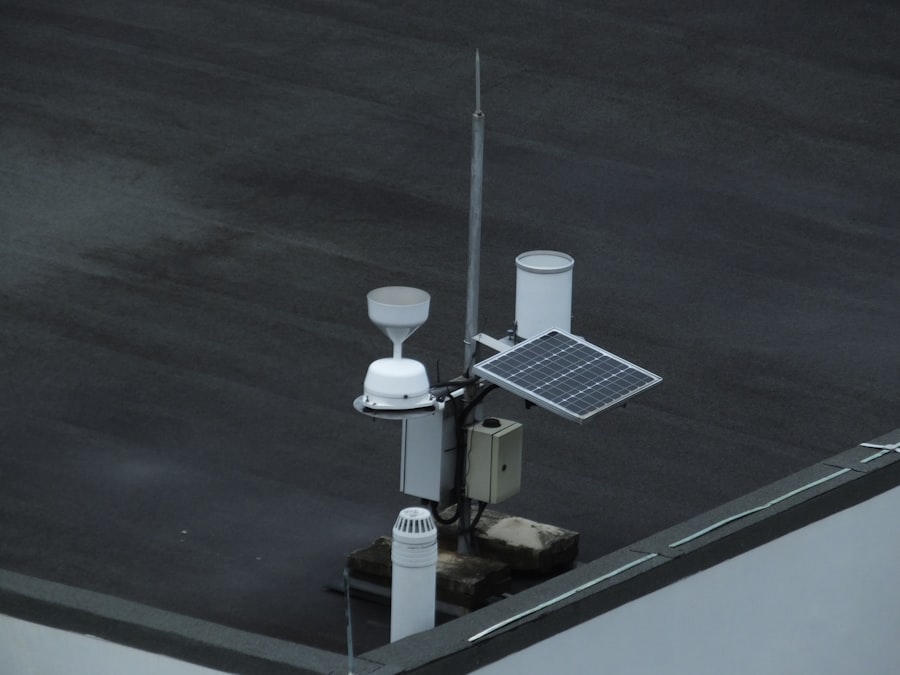Launched on August 12, 2018, the Parker Solar Probe represents a groundbreaking endeavor in solar science and space exploration. Named after Dr. Eugene Parker, an astrophysicist who proposed the existence of the solar wind in the 1950s, this mission aims to unravel the mysteries of the Sun’s outer atmosphere, known as the corona.
The probe is designed to travel closer to the Sun than any previous spacecraft, venturing within approximately 4 million miles of its surface. This proximity allows scientists to study solar phenomena in unprecedented detail, providing insights that could enhance our understanding of solar dynamics and their effects on the solar system. The Parker Solar Probe is not merely a technological marvel; it embodies decades of scientific inquiry and innovation.
The mission is a collaboration between NASA and the Johns Hopkins University Applied Physics Laboratory, with contributions from various institutions worldwide. By employing cutting-edge instruments and engineering solutions, the probe is equipped to withstand extreme temperatures and radiation levels that would be lethal to most spacecraft. As it embarks on its journey through the Sun’s atmosphere, the Parker Solar Probe promises to revolutionize our comprehension of solar physics and its broader implications for space weather and planetary atmospheres.
Key Takeaways
- The Parker Solar Probe is a NASA spacecraft designed to study the Sun’s atmosphere and its impact on space weather.
- The Sun’s atmosphere, or corona, is much hotter than its surface, and the Parker Solar Probe aims to understand why.
- The mission of the Parker Solar Probe is to fly closer to the Sun than any previous spacecraft, entering the corona to gather data.
- The technology behind the Parker Solar Probe includes a heat shield to protect it from the extreme temperatures near the Sun.
- Challenges of exploring the Sun’s atmosphere include designing a spacecraft to withstand intense heat and radiation.
- Discoveries from the Parker Solar Probe have included new insights into solar wind and the structure of the Sun’s corona.
- Implications for understanding space weather include the potential to improve predictions and preparations for solar storms.
- Future missions and exploration of the Sun’s atmosphere may involve new spacecraft and advanced technology to continue studying the Sun’s impact on the solar system.
The Sun’s Atmosphere: A Closer Look
The Sun’s atmosphere is a complex and dynamic environment composed of several layers, each with distinct characteristics and behaviors. The three primary layers are the photosphere, chromosphere, and corona. The photosphere, often referred to as the “surface” of the Sun, is where sunlight is emitted.
It has a temperature of about 5,500 degrees Celsius (9,932 degrees Fahrenheit) and is characterized by granules and sunspots that indicate turbulent activity beneath. Above this layer lies the chromosphere, which extends approximately 2,000 kilometers (1,200 miles) above the photosphere. The chromosphere is marked by spicules—jet-like structures that shoot upward and contribute to the heating of the corona.
The corona, which is the outermost layer of the Sun’s atmosphere, presents a fascinating paradox. Despite being farther from the Sun’s core, it reaches temperatures exceeding 1 million degrees Celsius (1.8 million degrees Fahrenheit). This extreme heating remains one of the most significant mysteries in solar physics.
The corona is also where solar wind originates—a continuous stream of charged particles that flows outward into space, influencing planetary atmospheres and space weather phenomena. Understanding the mechanisms behind this heating and the dynamics of the corona is crucial for comprehending not only solar behavior but also its impact on Earth and other celestial bodies.
The Mission of the Parker Solar Probe

The primary mission of the Parker Solar Probe is to gather data that will help scientists understand the fundamental processes occurring in the Sun’s atmosphere. By making a series of progressively closer orbits around the Sun over a seven-year mission timeline, the probe aims to collect data on solar wind acceleration, magnetic field dynamics, and coronal heating mechanisms. Each orbit brings it closer to the Sun, allowing for direct measurements of particles and electromagnetic fields in regions previously inaccessible to researchers.
One of the key objectives is to investigate how solar wind is accelerated as it moves away from the Sun. The probe’s instruments will measure plasma waves and magnetic fields in real-time, providing insights into how these factors contribute to solar wind dynamics. Additionally, by studying coronal mass ejections (CMEs)—massive bursts of solar wind and magnetic fields rising above the solar corona—scientists hope to better predict their occurrence and potential impact on Earth.
This knowledge is vital for safeguarding satellites, power grids, and communication systems that can be disrupted by intense space weather events.
The Technology Behind the Parker Solar Probe
| Technology | Description |
|---|---|
| Thermal Protection System (TPS) | The TPS is designed to withstand temperatures of up to 2,500 degrees Fahrenheit while keeping the instruments at a comfortable 85 degrees Fahrenheit. |
| Solar Panels | The solar panels are designed to retract behind the TPS when not in use to avoid overheating. |
| Autonomous Systems | The probe is equipped with autonomous systems to make decisions in real-time, as communication with Earth takes around 8 minutes. |
| Carbon Composite Shield | The shield is made of carbon composite material to protect the probe from intense heat and radiation. |
The Parker Solar Probe is a testament to human ingenuity and engineering prowess. To withstand the extreme conditions near the Sun, it features a cutting-edge heat shield known as the Thermal Protection System (TPS). This shield is made from carbon-composite materials and can endure temperatures exceeding 1,370 degrees Celsius (2,500 degrees Fahrenheit) while keeping its instruments at a relatively cool temperature of around 30 degrees Celsius (86 degrees Fahrenheit).
The TPS is designed to reflect sunlight and dissipate heat effectively, allowing the probe to operate in an environment that would otherwise be inhospitable. In addition to its robust thermal protection, the Parker Solar Probe is equipped with an array of scientific instruments designed for various measurements. These include imaging systems for capturing high-resolution images of solar phenomena, particle detectors for analyzing solar wind composition, and magnetometers for measuring magnetic fields in situ.
The combination of these instruments enables comprehensive data collection that will enhance our understanding of solar processes. Furthermore, advanced communication systems allow for data transmission back to Earth despite the vast distances involved, ensuring that scientists can analyze findings in real-time.
Challenges of Exploring the Sun’s Atmosphere
Exploring the Sun’s atmosphere presents numerous challenges that have historically limited our understanding of this celestial body. One of the most significant obstacles is the intense heat and radiation encountered as spacecraft approach the Sun. Traditional materials and technologies used in spacecraft design are inadequate for withstanding such extreme conditions.
Engineers had to innovate new materials and designs that could endure not only high temperatures but also intense solar radiation that could damage sensitive instruments. Another challenge lies in navigating the gravitational forces exerted by both the Sun and other celestial bodies in our solar system. The Parker Solar Probe employs a series of gravity assists from Venus to gradually reduce its orbital distance from the Sun.
This intricate maneuvering requires precise calculations and timing to ensure that each pass effectively brings the probe closer without compromising its trajectory or mission objectives. Additionally, maintaining communication with Earth while operating in such a hostile environment poses logistical difficulties; signals must traverse vast distances while contending with interference from solar activity.
Discoveries and Findings from the Parker Solar Probe

Since its launch, the Parker Solar Probe has already begun to yield remarkable discoveries that challenge existing theories about solar behavior. One significant finding involves observations related to solar wind acceleration. Preliminary data suggests that solar wind particles are accelerated much closer to the Sun than previously thought—within just a few million miles of its surface—indicating that traditional models may need revision.
This revelation has profound implications for our understanding of how energy is transferred from the Sun’s surface into space. Additionally, researchers have observed structures within the corona that were previously undetectable from Earth-based telescopes or other spacecraft. These structures include small-scale magnetic fields that appear to play a crucial role in coronal heating processes.
By capturing high-resolution images and conducting detailed analyses of these features, scientists are beginning to piece together how energy flows through the corona and contributes to phenomena such as solar flares and CMEs. Each new discovery adds another layer to our understanding of solar dynamics and reinforces the importance of continued exploration.
Implications for Understanding Space Weather
The findings from the Parker Solar Probe have significant implications for our understanding of space weather—an umbrella term encompassing various phenomena resulting from solar activity that can affect Earth and other planets. For instance, enhanced knowledge about solar wind dynamics can improve predictions regarding geomagnetic storms caused by CMEs or high-speed solar wind streams. These storms can disrupt satellite operations, communication systems, and even power grids on Earth.
Moreover, understanding how energy is transferred within the corona can help scientists develop better models for predicting when solar flares might occur. Such flares can release vast amounts of energy into space, potentially impacting technology on Earth or even posing risks to astronauts in orbit. By refining our predictive capabilities through data gathered by missions like the Parker Solar Probe, we can enhance our preparedness for space weather events and mitigate their potential impacts on modern society.
Future Missions and Exploration of the Sun’s Atmosphere
The success of the Parker Solar Probe paves the way for future missions aimed at further exploring our star and its complex atmosphere. One potential follow-up mission could involve deploying additional spacecraft equipped with advanced instruments designed specifically for long-term monitoring of solar activity. Such missions could focus on studying specific phenomena like CMEs or solar flares in greater detail over extended periods.
Moreover, international collaborations may emerge as countries recognize the importance of understanding solar dynamics for global technology infrastructure. Future missions could leverage advancements in technology developed during the Parker Solar Probe mission while incorporating lessons learned from its findings. As we continue to explore our Sun’s atmosphere, each new mission will contribute invaluable knowledge that enhances our understanding not only of our star but also of fundamental astrophysical processes that govern stellar behavior across the universe.


